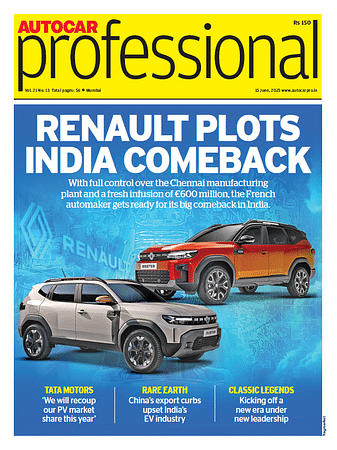India aims to curb 'paper tiger' hydrogen projects with new funding strategy
The government has shifted from a top-down funding approach to a collaborative model to address specific challenges in hydrogen commercialization.
India's hydrogen fuel ambitions are growing rapidly, with the government pivoting its funding strategy to prioritize innovation and scalability over mere cost. The Ministry of New & Renewable Energy aims to accelerate the commercialization of hydrogen, particularly in the heavy-duty trucking segment.
Previously, the government took a top-down approach, dictating which projects to fund. Now, the focus is on a collaborative model, where industry leaders are consulted to identify the specific needs and challenges hindering market entry. This approach, according to Dr. PA Chaphekar, Deputy Secretary at the ministry, is designed to avoid the pitfalls of "paper tigers" – projects that remain theoretical without tangible outcomes.
The transition to hydrogen-powered heavy-duty trucks is a significant step toward decarbonizing India's transportation sector. However, high initial costs and infrastructure limitations for fuel cell technology have slowed progress. In contrast, hydrogen-internal combustion engine (H-ICE) technology presents a more immediate opportunity for commercialization, potentially within the next two to three years.
To foster innovation and expedite commercialization, the government has shifted its funding criteria. Instead of prioritizing the lowest cost, the emphasis is on projects that demonstrate innovation, scalability, and a clear path to market deployment.
Pilot projects are now viewed as opportunities for learning and improvement, rather than as purely cost-effective ventures. "Cost is not the criteria, or should not be the criteria to determine the projects which are to be funded. The criteria is the innovation, the scale," said Chaphekar in his address during a seminar titled, 'Hydrogen: Emerging Technology Scenario for ICE Application' was hosted by ARAI in Pune on Wednesday.
According to Chaphekar, this new approach necessitates a closer partnership between the government and industry. While interactions with industry associations like SIAM are ongoing, the government calls for a more sustained and proactive engagement. The industry ha been urged to present detailed proposals, backed by data and analysis to articulate their specific needs and challenges.
By breaking down obstacles which hinder open dialogue, both parties can work together to accelerate the hydrogen transition. "Our goal has always been to promote scale in the fastest possible manner. Without scale you will never achieve the cost, you will never achieve parity," he concluded.
RELATED ARTICLES
Cabinet Approves ₹1 lakh crore RDI Scheme to Fuel Sunrise Sector Innovation
The RDI Scheme is designed to address key constraints in financing private R&D initiatives by offering long-term, low or...
Honda Motorcycle & Scooter India Sales Decline 17% YoY in June
Company expanded road safety and EV outreach alongside product launches in June.
Tata Motors Cedes Ground to MG and Mahindra in Electric PV Market
MG and Mahindra command more than 53% of the electric PV market, a dramatic reversal from a year ago, when Tata alone he...





 By Shahkar Abidi
By Shahkar Abidi
 28 Nov 2024
28 Nov 2024
 3267 Views
3267 Views





 Arunima Pal
Arunima Pal




